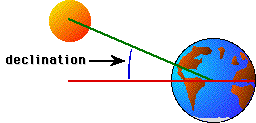miquar
Well-known member
Hi. I'm trying to find some background on the sidereal zodiac. I wonder if anyone could please answer any of these questions.
Where exactly is the first point of tropical Aries in the sidereal sign system that is used by most sidereal astrologers? Is this the same system that was used by the Persian astrologers from around the 5th century BCE?
Do any astrologers use sidereal signs that are defined by the first point of sidereal Aries that was defined by the astronomers about 80 years ago?
Are there any other definitions of the first point of sidereal Aries?
Finally, does anyone know anything about the first use of the tropical zodiac by Ptolemy in the 2nd century CE?
Many thanks. Best wishes,
Where exactly is the first point of tropical Aries in the sidereal sign system that is used by most sidereal astrologers? Is this the same system that was used by the Persian astrologers from around the 5th century BCE?
Do any astrologers use sidereal signs that are defined by the first point of sidereal Aries that was defined by the astronomers about 80 years ago?
Are there any other definitions of the first point of sidereal Aries?
Finally, does anyone know anything about the first use of the tropical zodiac by Ptolemy in the 2nd century CE?
Many thanks. Best wishes,




